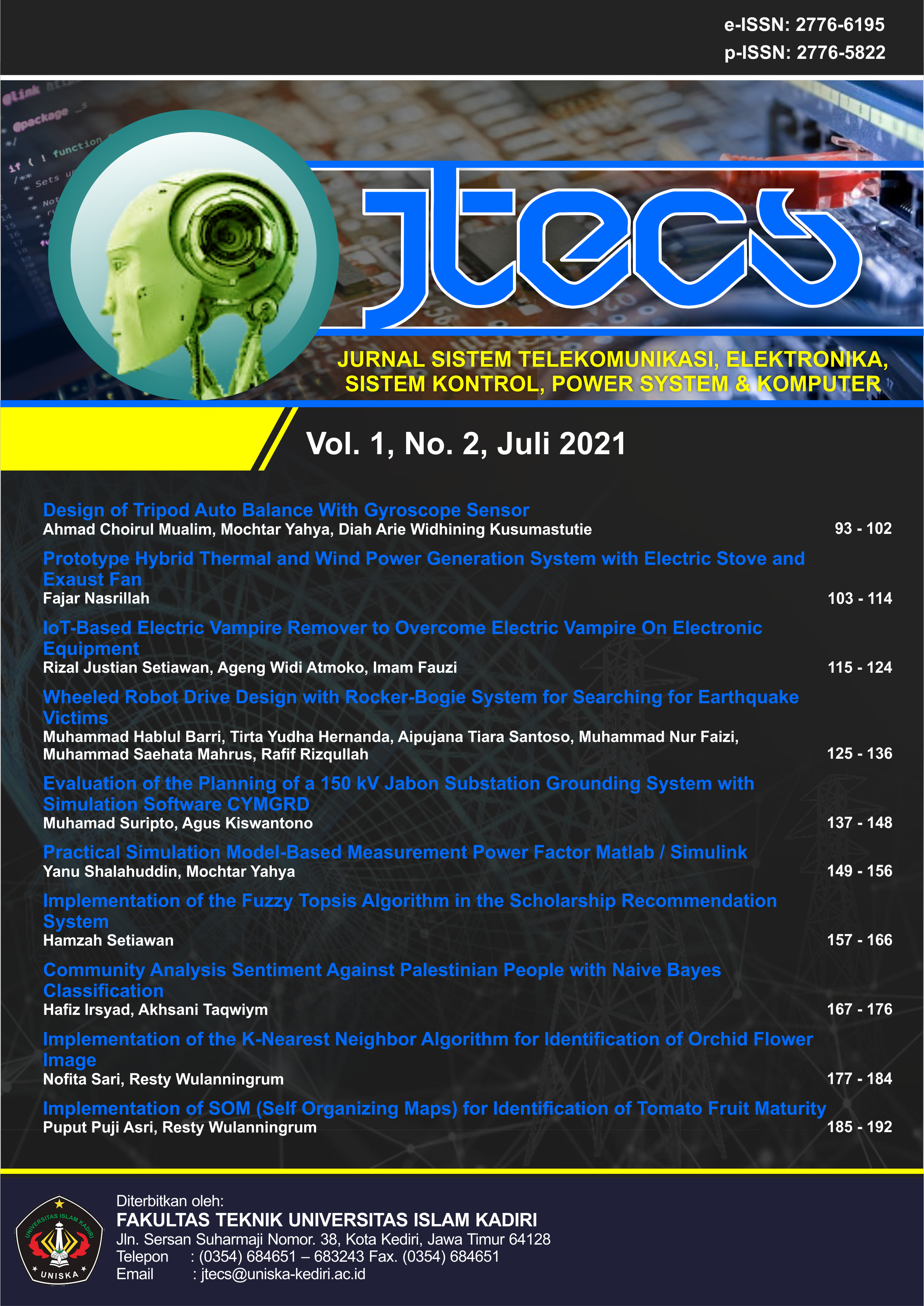IoT-Based Electric Vampire Remover to Overcome Electric Vampire On Electronic Equipment
Electric Vampire Remover Berbasis IoT Untuk Mengatasi Vampir Listrik Pada Peralatan Elektronik
Abstract
Based on data from PLN, in 2020 the number of PLN customers has reached 77,19 million or increase of 3.59 million customers compared to 2019 which amounted to 73,6 million customers. Along with modernization in Indonesia, without realizing it there is still a lot of wasted electrical energy from electronic devices that are left on standby and not used or electric vampires. The purpose of this research created a tool to overcome the problem of electric vampires in electronic equipment in order to reduce the number of losses below the national electric losses of 8%. The implementation method used for the design and manufacture of the Electric Vampire Remover is the Research and Development (R&D) research method. The steps taken are: 1) analysis of tool requirements, 2) design of tool, 3) manufacture of tool in the laboratory, 4) testing of tool functions and performance, 5) concluding the results. These stages are conducted in cycles to get the best result. The result of the research is the creation of an Electric Vampire Remover which is functionally proven to be able to control electrical equipment properly. This tool can be operated stand-alone or based on internet network. The results showed that the tool was able to reduce losses caused by electric vampires by 99%. The application of this tool at home is able to save 36,908 kWh which is equivalent to Rp. 53,320.99/month in the fare class or R-1/1300 VA power.
References
[2] Kementerian ESDM. 2016. Listrik untuk Indonesia Mandiri Energi. https://www.esdm.go.id/id/media-center/arsip-berita/listrik-baik-untuk-indonesia-mandiri-energi. diakses pada tanggal 19 Juni 2021
[3] Sahin, M.C. and Koksal, M.A. 2014. Standby electricity consumption and saving potentials of Turkish households. Applied Energy Journal, vol 114, hal. 531-538.
[4] Keoh, S. L., Kumar, S., and Tschofenig, H. 2014. Securing the Internet of Things: A Standardization Perspective. IEEE Internet of Things Journal, vol 1(3), hal 1–8.
[5] Burange, A. W., and Misalkar, H. D. 2015. Review of Internet of Things in Development of Smart Cities with Data Management & Privacy. Journal IEEE.
[6] Banzi, M., and Shiloh M., 2014. Getting Started with Arduino: The Open Source Electronics Prototyping Platform. Maker Media Inc, California.
[7] Sugiyono. 2016. Metode Penelitian Kuantitatif, Kualitatif dan R&D, Bandung. PT Alfabeta.

This work is licensed under a Creative Commons Attribution-NonCommercial-ShareAlike 4.0 International License.













.png)
.png)













